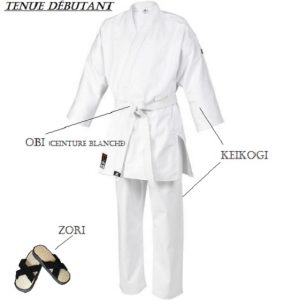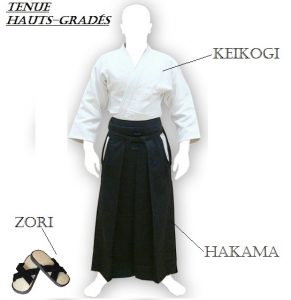Comment pratiquer?
L’aikido se pratique à l’aide d’un kimono « keikogi« blanc, d’une ceinture blanche et d’un pantalon blanc. Cette tenue est utilisée par tous les pratiquants (débutants comme confirmés).
Seuls les plus hauts-gradés sont autorisés à porter le « hakama« , sorte de long et ample pantalon noir ou bleu marine.
Afin de se déplacer en-dehors du tatami, les aïkidokas portent des sandales japonaises appelées « zori« .


